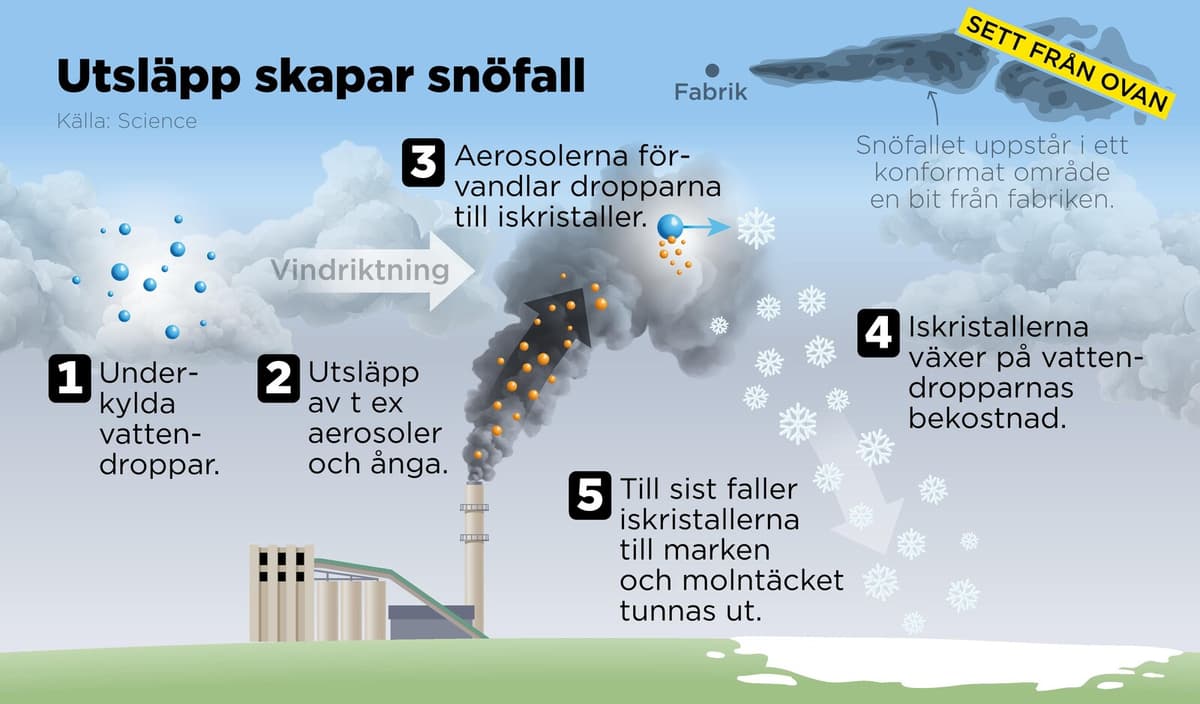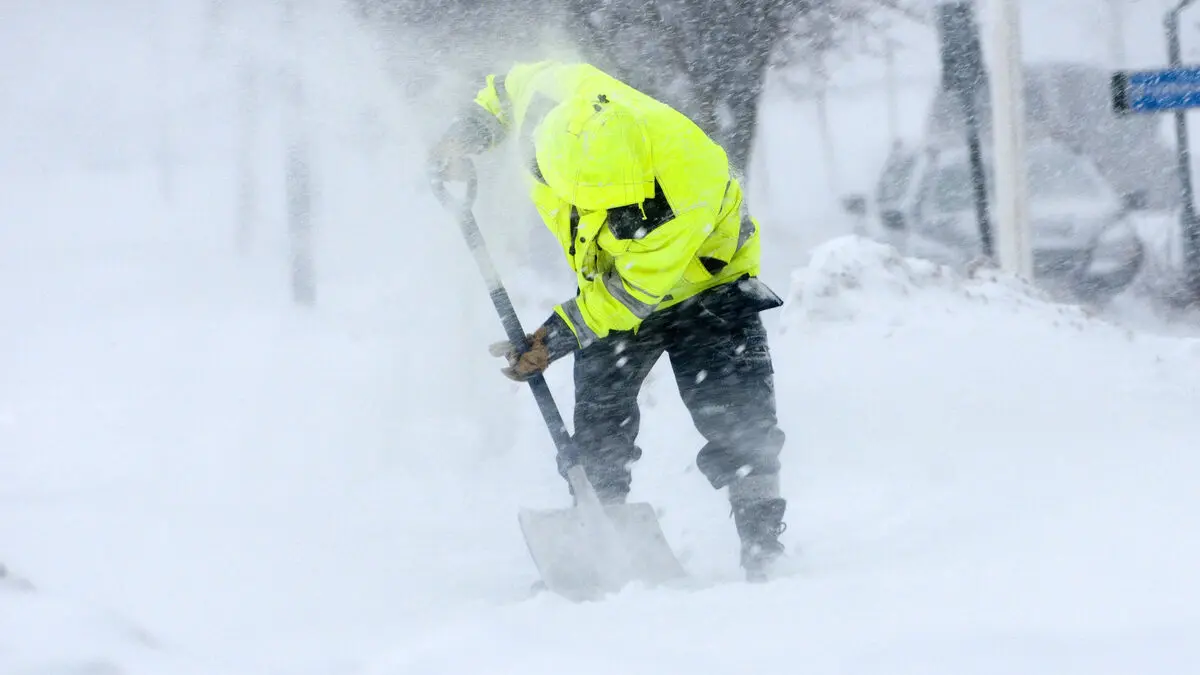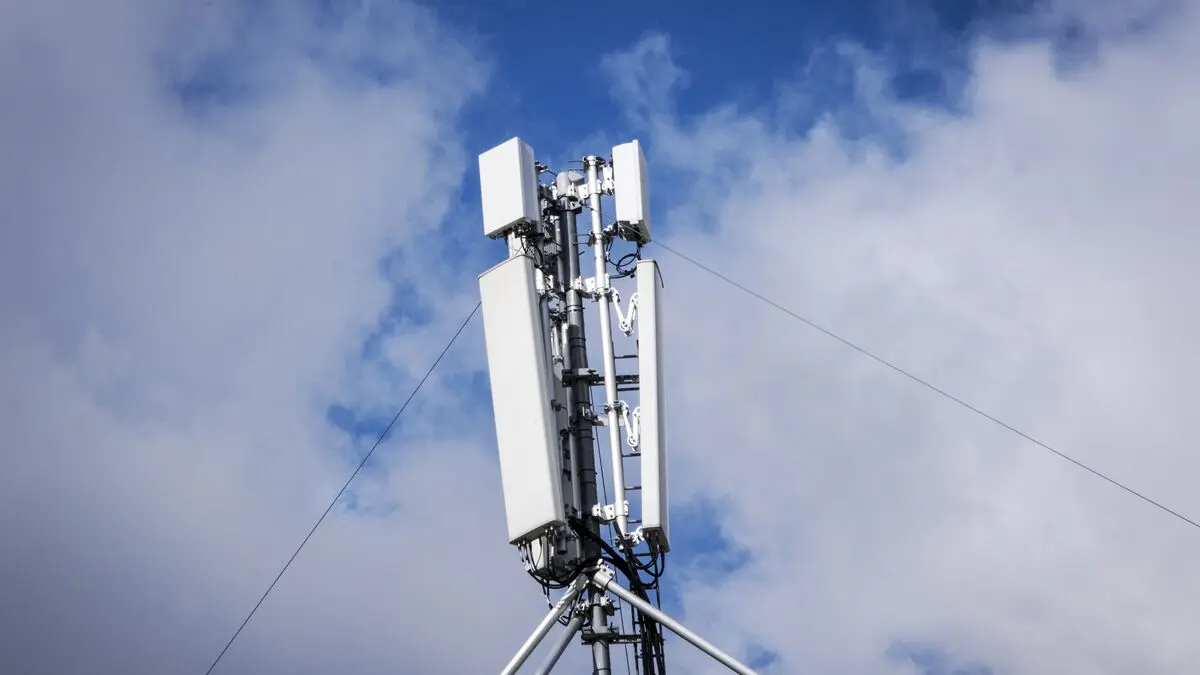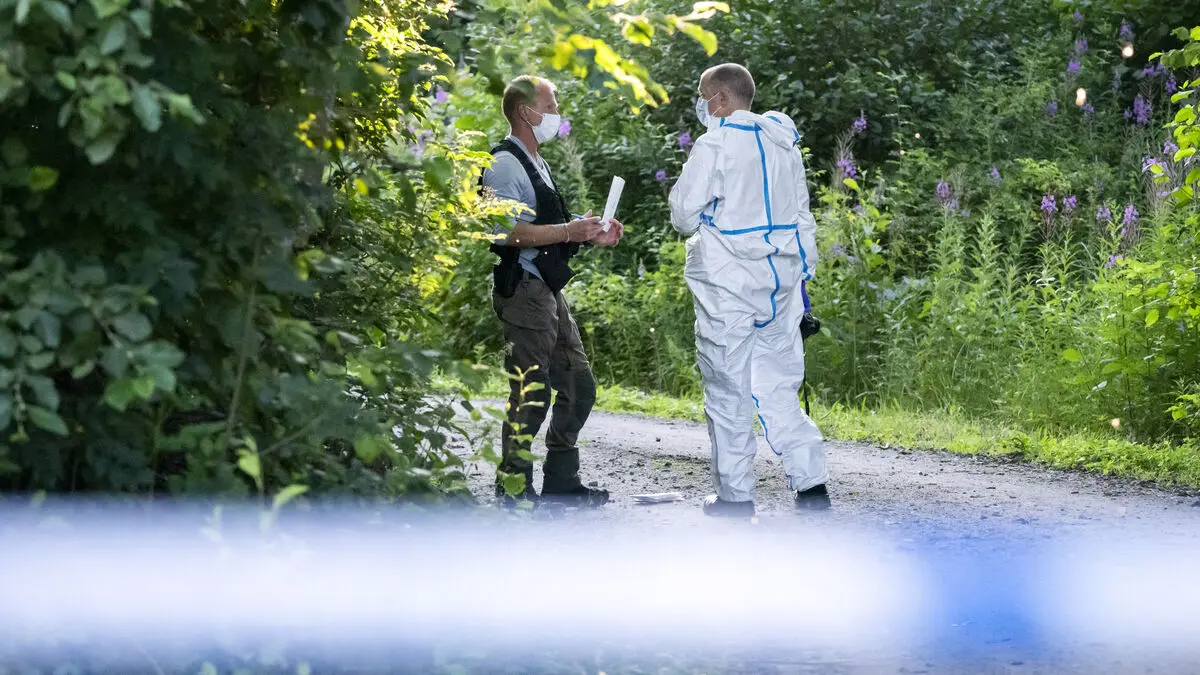Even though it's many minus degrees up in the atmosphere, clouds can consist of liquid small water droplets. But they can freeze into ice, glaciers, if they come into contact with small air particles released with the smoke from, for example, coal-fired power plants, cement factories, oil refineries, and metal industries, shows a new study. If it's minus degrees, it can lead to snowfall.
We discovered that in some cases it can be up to 15 millimeters, and it's quite large areas – the average was 2,200 square kilometers, says Velle Toll, lecturer at the University of Tartu in Estonia.
The snowfall occurs in a sort of coniform in the wind direction from the factory in question.
And it's snow in areas where there is no snow nearby, so potentially it can have a local impact, he continues.
Can happen in minutes
The researchers have studied factories in Canada and Russia, but Toll says it also applies to the Nordic countries. For the phenomenon to occur, super-cold water clouds, temperatures between -10 and -24 degrees, and relatively static weather are needed so that the air particles from the factories can accumulate.
If we have favorable conditions, it can happen relatively quickly, this glaciation. It can be less than an hour from the start of emissions to the start of snowing, says Toll.
Actually, it's strange that the discovery hasn't been made before.
It was very surprising for us that no one else had seen the evidence. Not only have we had these factories for a long time. We have also discovered the phenomenon in satellite data that has been there for 20 years, he says.
"Small increase"
Frida Bender, associate professor at Stockholm University, who was not involved in the research, calls the study interesting. She notes that it's difficult to experiment with the atmosphere and that it's smart to look at factories that are already there.
It's pretty small effects, I would say, it's not like it suddenly becomes a snowstorm. It's more a small increase in snow that might not have been there otherwise, she says.
The researchers have looked at what happens to the clouds in the wind direction from 67 factory facilities in Russia and Canada that release small particles into the air, so-called aerosols. The factories are, among other things, coal-fired power plants, oil refineries, cement factories, metal industries, and paper mills.
The researchers could see that ice clouds formed in the middle of cloud layers consisting of water clouds in 69 percent of the observed cases. In 29 percent, they could also see snowfall in the form of a smoke plume.
A certain effect was also seen on four nuclear power plants, which suggests that water vapor or heat emissions may have an impact.
In addition to satellite images, the researchers have also measured snowfall using ground-based radar.
The study is presented in the scientific journal Science.





